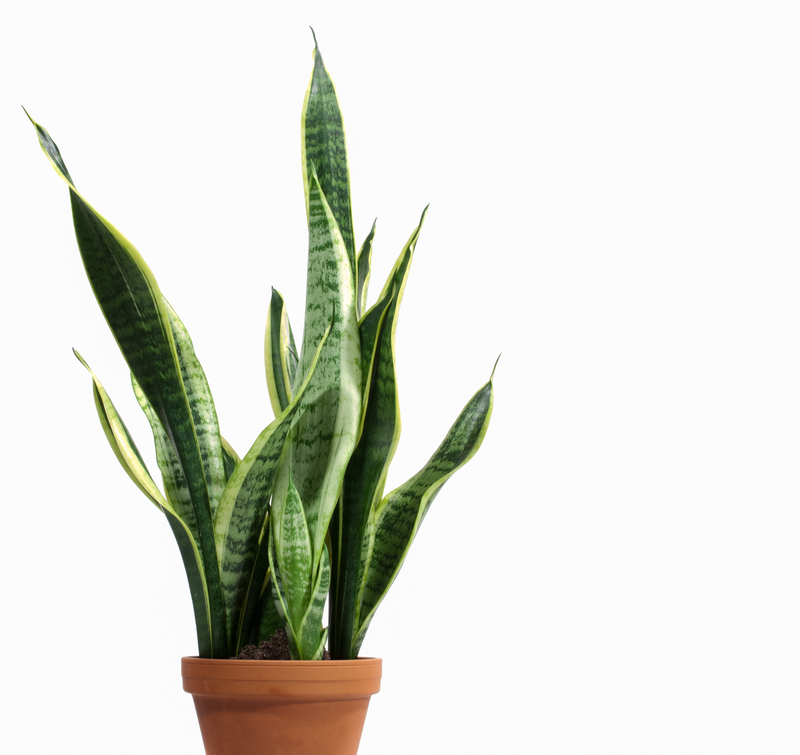Reach new levels of greenery with vertical gardening
Posted on 26/09/2025
Reach New Levels of Greenery with Vertical Gardening
Are you ready to transform your space into a lush paradise? Discover how vertical gardening can elevate your home, garden, or workplace into verdant sanctuaries--no matter how limited the space. Immerse yourself in this comprehensive guide that explores innovative vertical gardening techniques, the best plant choices, design ideas, maintenance tips, and the environmental benefits of going vertical.

What is Vertical Gardening?
Vertical gardening--also known as living walls, green walls, or vertical plant installations--is the practice of growing plants upwards rather than outwards. Unlike traditional, horizontal gardens, vertical gardens maximize space by using walls, trellises, stacked planters, or hanging systems, making them perfect for urban gardeners and those with spatial constraints.
Why Choose a Vertical Garden?
- Space Efficiency: Ideal for balconies, patios, and small yards, vertical gardens utilize unused vertical surfaces.
- Air Purification: Dense plantings naturally filter air pollutants, improving indoor and outdoor air quality.
- Temperature Regulation: Living walls provide insulation, helping to regulate building temperatures.
- Aesthetic Appeal: Green walls add texture, color, and interest to otherwise bland areas.
- Health & Wellbeing: Being surrounded by greenery reduces stress and increases feelings of wellbeing.
Types of Vertical Gardening Systems
When aiming to reach new heights of greenery with vertical gardening, choosing the right system is essential. Here are some common types that cater to different needs, spaces, and budgets:
1. Pocket Planters and Felt Walls
- Pocket planters are fabric systems that attach to walls, each pocket containing soil and plants.
- Felt or textile vertical wall planters are lightweight, easy to install, and foster good drainage.
- Popular for herbs, small flowering plants, or succulents.
2. Trellises & Climbing Supports
- Classic for climbers like ivy, jasmine, and vegetables like beans and tomatoes.
- Trellises can be attached directly to walls or used as garden dividers.
3. Stacked Planters and Tiered Shelves
- Modular, stackable planters allow for easy customization and accessibility.
- Great for edibles, trailing plants, and compact hybrids.
4. Hydroponic and Modular Living Walls
- Advanced systems using soilless media, automatic irrigation, and fertilization.
- Favored for large commercial installations and indoor applications.
5. Hanging Gardens & DIY Recycled Systems
- Use recycled bottles, pallets, or guttering for affordable, sustainable vertical gardens.
- Perfect for DIY enthusiasts and sustainable gardeners.
Best Plants for Vertical Gardening
Success in vertical gardening hinges on choosing the right plants. Consider light levels, climate, maintenance, and the visual effect you want to achieve.
1. Edible Greens & Herbs
- Lettuce, arugula, spinach, and microgreens for fast harvests.
- Basil, parsley, mint, thyme and oregano--aromatic and easy to care for in small pockets.
2. Climbers & Vines
- English ivy, pothos, philodendron, jasmine, and sweet peas for cascading greenery.
- Passionflower and morning glory for dramatic blooms on sunny walls.
3. Succulents & Cacti
- Sempervivum, echeveria, jade plant, and sedum for low-maintenance, sculptural displays.
4. Flowering Plants
- Petunias, nasturtiums, begonias, and fuchsias bring color to shaded or sunny locations.
5. Ferns & Shade Lovers
- Boston fern, maidenhair fern, asparagus fern, and caladium for lush texture on north-facing walls.
Designing Your Vertical Garden: Inspiration and Practical Tips
Creating a stunning vertical garden is as much about creative expression as it is about horticulture. Here's how to design a wall of living art using practical advice:
1. Assess Your Space
- Identify walls, fences, railings, or unused corners with adequate light and access to water.
- Measure the area and plan for the weight of containers, wet soil, and plant growth.
2. Choose a Focal Point
- Plan your design around a visual centerpiece, such as a flowering cascade or a sculptural plant.
- Create balance by placing larger, bolder plants at eye level and using trailing species for movement.
3. Layering and Texture
- Combine different leaf shapes, colors, and growth habits for visual interest.
- Use a mix of upright, trailing, and bushy plants to create contrast and depth.
4. Accessibility and Maintenance
- Design systems so you can easily water, prune, and replace plants.
- Consider automated irrigation for large or hard-to-reach installations.
5. Lighting
- Match plant selection to natural light conditions, or install grow lights for indoor green walls.
How to Build Your Own Vertical Garden
Ready to reach new levels of greenery with vertical gardening? Here's a step-by-step guide for a DIY vertical wall garden, adaptable for indoors or outdoors:
Step 1: Gather Materials
- Pocket planters or a vertical garden kit
- Wall mounting supplies (anchors, screws, and a drill)
- Quality potting mix, slow-release fertilizer
- Your chosen plants
- Watering system (manual or automated)
Step 2: Prepare the Wall
- Ensure your wall can bear the weight of the planted system.
- Install waterproof backing if needed to prevent water damage.
Step 3: Assemble and Plant
- Mount the supporting structure securely.
- Arrange plants based on light, growth habits, and the developed design.
- Fill pockets or containers with potting mix, add fertilizer, and plant.
Step 4: Water and Maintain
- Water thoroughly and maintain consistent moisture levels.
- Monitor for pests, prune regularly, and replace any failing plants to keep your living wall lush.
Vertical Gardening Maintenance: Tips for Thriving Green Walls
A hassle-free, beautiful vertical garden requires regular care:
- Watering: Most vertical gardens dry out quickly. Install drip irrigation or use self-watering planters for larger walls.
- Feeding: Feed with diluted liquid fertilizer every few weeks, or use slow-release pellets.
- Pruning: Trim overgrown stems and remove spent flowers to encourage new growth.
- Replacing: Be prepared to swap out underperforming plants due to competition or environmental changes.
- Inspecting: Check regularly for pests, diseases, or signs of nutrient deficiency.
Benefits of Vertical Gardens
Vertical gardening isn't just about aesthetics--it's an eco-friendly movement with far-reaching benefits:
- Improved Air Quality: Dense foliage acts as a natural air filter, absorbing pollutants and releasing fresh oxygen.
- Thermal Insulation: Green walls reduce heat gain in summer and heat loss in winter, lowering energy bills.
- Noise Reduction: Living walls absorb sound, creating quieter indoor and outdoor environments.
- Urban Biodiversity: Attract bees, butterflies, and birds to your garden, supporting urban wildlife.
- Mental Wellness: Proximity to greenery is proven to reduce stress and enhance productivity.
- Food Security: Up to 50% more herbs and vegetables can be grown on walls compared to flat surfaces.
Innovative Ideas and Trends in Vertical Gardening
The future of vertical gardening is blossoming--with designers, businesses, and communities embracing ever more creative approaches. Here are some cutting-edge trends:
- Edible Living Walls for gourmet kitchens, restaurants, and urban food production.
- Biophilic Design in offices and homes to reconnect people with nature indoors.
- Artistic Plant Murals using colored foliage and flowering patterns for artistic impact.
- Integrated Hydroponics for efficient, water-wise city farming.
- Digital Control Systems that monitor soil moisture, nutrient delivery, and lighting.
Common Challenges and Solutions in Vertical Gardening
While the advantages are substantial, vertical gardens have their challenges. Here's how to overcome the most common hurdles:
- Water management: Prevent leaks and water waste by using drip lines, waterproof membranes, and slanted planters.
- Sunlight: Not all walls get adequate light. Use shade-loving plants for low-light areas, or install grow lights.
- Structural stability: Consult with professionals for large walls to ensure the load is safely distributed.
- Pests & Diseases: Increase air circulation and avoid overcrowding to minimize problems. Use organic treatments if needed.
- Cost: Start small with a DIY project using recycled materials if budget is a concern.

Frequently Asked Questions about Vertical Gardening
- Can vertical gardens be grown indoors?
Absolutely! With the right choice of low-light plants and grow lights, vertical gardens thrive indoors--in homes, offices, and schools. - Are vertical gardens expensive to maintain?
Maintenance can be low with automated watering. The main commitment is occasional pruning, fertilizing, and plant replacement. - Do vertical gardens damage walls?
Modern systems with waterproof backing protect underlying surfaces. Always check the installation to safeguard your wall. - How long do vertical gardens last?
With good care, the structure will last years. Refresh plants as needed each season for continual beauty. - What is the best soil for a vertical garden?
Use a lightweight, well-draining potting mix, amended with compost or coco coir for water retention and nutrition.
Conclusion: Elevate Your Green Space Today
Vertical gardening unlocks a new dimension for growing plants--no matter how limited your space or experience. Beyond just looks, it delivers improved air and insulation, food security, and a tangible connection to nature. Whether you're transforming a small apartment balcony or an office lobby, now is the perfect time to reach new levels of greenery with a vertical garden. Let your creativity bloom skyward!
Ready to get started? Take the first step and design your own living wall--urban oasis, lush kitchen garden, or a piece of green art. The future of gardening is vertical--join the movement and let your space go green from the ground up!



